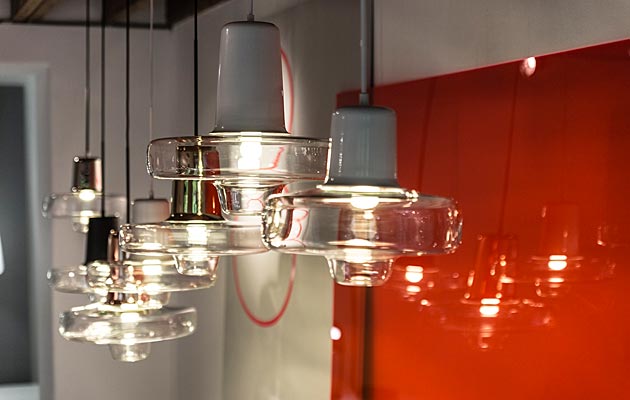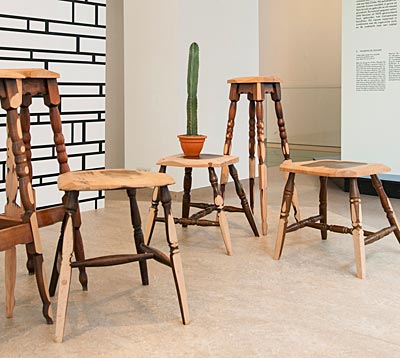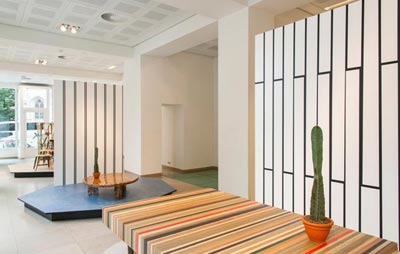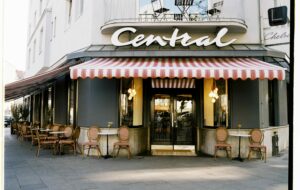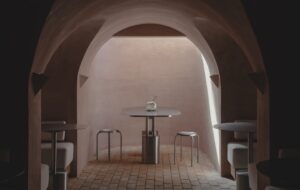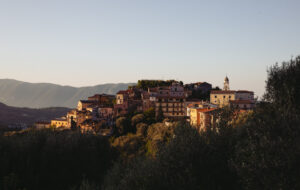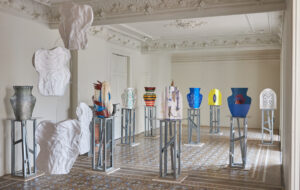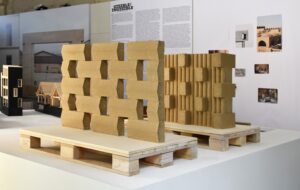|
|
||
|
Belgian designers took centre stage at this year’s event, which attempted to highlight the commercial value of design through an eclectic range of exhibitions and installations Design September in Brussels likes to herald its home-grown talent, and this year its focus has remained squarely on its Belgian roots. The festival is as eclectic as its host city — a mish-mash of installations, exhibitions, pop-up shops and restaurants, specially commissioned pieces, a design prize, furniture launches, lectures, conferences and open studios. According to the festival’s art director, Belgian designer Delphine Vercauteren, the programme has gone back to basics in what is her final year at the helm. “I’m Belgian, a designer and a woman, so I wanted to let those three [elements] shine in this festival,” she says.
Makkink & Bey furniture for Möbel The Belgian design theme is indeed particularly strong this year. New brand Möbel, for example, launched at the Design Flanders Gallery with a collection of high-end furniture pieces designed by established Belgian designers Makkink & Bey, Maarten de Ceulaer, JIJ’s and Kaspar Hamacher. The collection is curated by Pieter Boons of HEIMAT, and is the brainchild of ResourceLab, which promotes upcycling and local artisanship. The emphasis on local production is evident in a lot of Belgian design. It is one of the core tenets of new Belgian manufacturer Cruso, which launched its range of furniture made from environmentally-friendly materials this month. Its inaugural product is a table by Jean-François D’Or, and the brand will add items three times a year, using the clout of established designers to also promote new talent.
Kaspar Hamacher furniture for Möbel Other installations by Belgian designers are dotted across the city, in small galleries, abandoned buildings, Brussels arts institutions and public spaces — some more impressive than others. The display of work by Michaël Bihain and Gauthier Poulain, for example, at a central Sofitel hotel is somewhat underwhelming, while one of the more delectable projects is presented at experiential store Pimpinelle. Sponsored by S Pellegrino, which commissioned the store to stage events around Italian cooking, the “Mozzarella Bar” includes an installation featuring a new table, Tavolina, by Belgian furniture designer and architect Alix Welter and graphic designer Pierre-Philippe Duchâtelet. The John and Rose Art Café, meanwhile, is showing the simple and functional work by Jérôme Ronsmans and Jun Gobron.
JIJ furniture for Möbel The emphasis on Belgian design is underscored by the festival’s aim to highlight the commercial value of design this year. The Power of Objects exhibition, for example, displays designers’ most iconic products alongside their most profitable and their bestseller in a clever spin on the classic design exhibition. Despite the penchant towards the home-grown, international designers also feature strongly at Design September, many continuing the theme of the artisanal and local production. For example, Czech designer Lucie Koldova’s exhibition at the Diito gallery shows of some of her most striking work. Her show, 10+1, includes her collaborations with Czech glass manufacturer Brokis, such as the Muffin and Balloon lamps and new prototypes for her Whistle lamp, highlighting the winning relationship between designer and local manufacturer. It is a stunning installation, the gallery providing an apt stage for Koldova’s large-scale work.
June table by Jean-François D’Or for Cruso There are also two exhibitions of Polish design, Nasza Polska and Crazy Polish Communist-Inspired Design, and shows by other international designers, such as Endgrain by London studio Raw Edges. During the month, some high-profile lectures from the likes of Arik Levy and Ronan and Erwan BouroullecBouroullec took place. Despite the haphazard distribution of events and exhibitions across the city, the festival has provided a month’s-worth of good design. Brussels Design September runs until the end of the month |
Words Anna Richardson Taylor |
|
|
||

